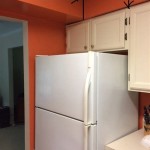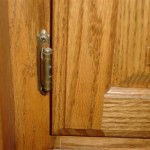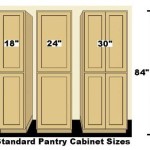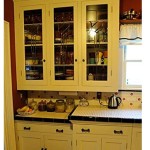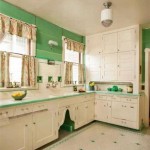Standard Kitchen Cabinet Drawer Dimensions: A Comprehensive Guide
Kitchen cabinet drawers are integral components of efficient kitchen design, providing accessible storage for various items. Understanding standard drawer dimensions is crucial for planning a kitchen remodel, replacing existing drawers, or designing custom cabinetry. This article provides a detailed overview of standard kitchen cabinet drawer dimensions, covering width, depth, and height considerations.
Standard dimensions are established to ensure compatibility with common cabinet sizes and to facilitate ease of manufacturing and installation. While custom options are always available, adhering to standard dimensions often reduces costs and lead times. Furthermore, standard dimensions simplify the process of purchasing replacement drawer fronts, slides, and other hardware.
The measurements discussed primarily focus on base cabinet drawers, which are the most common type found in a kitchen. Wall cabinet drawers are less frequent, and their dimensions are typically dictated by specific design considerations. This article will primarily address the dimensional standards for base cabinet drawers.
A key consideration when planning drawer dimensions is the type of items intended to be stored within them. Drawers for utensils will differ in height and depth from those designed for pots and pans. Planning the contents of each drawer will ensure optimal space utilization and functionality.
Standard Drawer Widths
Drawer width is measured from the exterior side to the exterior side of the drawer box. Standard kitchen cabinet widths typically range from 9 inches to 48 inches, increasing in 3-inch increments. Therefore, standard drawer widths also tend to follow this pattern, although the actual drawer box width will be slightly smaller than the cabinet opening to allow for smooth operation and clearance for drawer slides.
The most common drawer widths are 12 inches, 15 inches, 18 inches, 24 inches, 30 inches, 36 inches, and 42 inches. Narrower drawers, such as 9 inches or 12 inches, are often used for storing utensils, spices, or smaller items. Wider drawers are better suited for larger items, such as pots, pans, or serving dishes.
It's important to note that the internal drawer space will be slightly smaller than the drawer's exterior width due to the thickness of the drawer box sides. Typically, the internal width will be reduced by approximately 1 to 1.5 inches, depending on the material used for the drawer box construction. For example, a drawer with an external width of 24 inches might have an internal width of approximately 22.5 to 23 inches.
When planning drawer width, consider the overall design of the kitchen and the placement of other appliances and fixtures. Ensuring adequate clearance between drawers and adjacent elements is crucial for preventing obstructions and maintaining functionality. Furthermore, wider drawers may benefit from center supports to prevent sagging, especially when storing heavy items.
The frame construction of the cabinets also impacts the available drawer width. Face-frame cabinets, which have a frame surrounding the cabinet opening, will have a slightly smaller drawer opening compared to frameless cabinets, which utilize a more streamlined construction without a face frame. This difference in construction should be accounted for when determining the appropriate drawer width.
For optimal space utilization, consider incorporating drawer dividers and organizers. These accessories can help to compartmentalize the drawer space and prevent items from shifting or becoming disorganized. Drawer dividers are particularly useful in wider drawers where items are more likely to move around.
Standard Drawer Depths
Drawer depth, often referred to as drawer extension, is the distance from the front of the drawer to the back. Standard drawer depths are influenced by the depth of the base cabinets themselves, which typically range from 24 inches to 27 inches. Consequently, standard drawer depths are generally less than the cabinet depth to allow for hardware and back panel clearance.
The most common drawer depths are 18 inches, 21 inches, and 24 inches. An 18-inch depth is often used for shallower drawers designed for smaller items or in situations where clearance is limited. A 21-inch depth provides a good balance between storage capacity and accessibility, and a 24-inch depth maximizes storage space, especially in deeper base cabinets.
The type of drawer slides used will also affect the available drawer depth. Full-extension drawer slides allow the drawer to be pulled out completely, maximizing access to the contents. Partial-extension drawer slides, on the other hand, only allow the drawer to be pulled out partially, resulting in a slightly reduced usable depth. Full-extension slides are generally preferred for their superior accessibility, but they may be more expensive than partial-extension slides.
When selecting drawer depth, consider the reach required to access items stored at the back of the drawer. Deeper drawers may require more effort to reach items, especially for individuals with limited mobility. Drawer organizers and pull-out shelves can help to improve accessibility in deeper drawers.
Similar to drawer width, the internal drawer depth will be slightly less than the external depth due to the thickness of the drawer box back. This difference is typically around 1 to 1.5 inches, depending on the material used. Therefore, a drawer with an external depth of 24 inches might have an internal depth of approximately 22.5 to 23 inches.
The presence of plumbing or other obstructions behind the cabinet can also impact the usable drawer depth. Ensuring adequate clearance around pipes and other utilities is crucial for preventing interference and maintaining functionality. This may necessitate reducing the drawer depth or modifying the cabinet design.
Standard Drawer Heights
Drawer height refers to the vertical dimension of the drawer box. Standard drawer heights vary considerably depending on the intended use of the drawer. Shorter drawers are typically used for storing utensils, cutlery, or smaller items, while taller drawers are designed for storing pots, pans, or larger containers.
Common drawer heights include 4 inches, 6 inches, 8 inches, 10 inches, and 12 inches. A 4-inch drawer height is often used for cutlery trays or shallow storage. A 6-inch drawer is suitable for utensils, spices, or smaller kitchen tools. An 8-inch drawer can accommodate larger utensils, cutting boards, or small appliances. A 10-inch or 12-inch drawer is typically used for pots, pans, or other bulky items.
The height of the cabinet opening will dictate the maximum allowable drawer height. In multi-drawer configurations, the total height of all drawers must not exceed the available cabinet opening height. Careful planning is essential to ensure that all drawers fit properly and function smoothly.
The drawer front height may differ slightly from the drawer box height. Drawer fronts often extend slightly above the drawer box to provide a clean and finished appearance. The amount of overlap between the drawer front and the cabinet frame will vary depending on the cabinet style and design.
When planning drawer height, consider the vertical space required to store items comfortably. Allow for adequate clearance above the items to prevent them from becoming damaged or difficult to remove. Using drawer dividers and organizers can help to maximize vertical space and prevent items from shifting.
For specialized storage needs, custom drawer heights can be designed to accommodate specific items. For example, a tall drawer can be designed to store baking sheets or platters vertically. However, custom drawer heights may increase costs and lead times.
The internal height of the drawer, from the bottom of the drawer to the top edge of the drawer box, is the critical measurement for determining storage capacity. Ensure that the chosen drawer height provides sufficient internal space to accommodate the intended items. This is especially important for drawers designed to store tall or bulky objects.
Understanding standard kitchen cabinet drawer dimensions is essential for planning a functional and efficient kitchen. By considering drawer width, depth, and height in relation to cabinet size, storage needs, and hardware requirements, it is possible to create a kitchen that optimizes space utilization and enhances usability.

Kitchen Cabinet Drawer Dimensions Standard Inspiration Ideas 3 Decorating Cabinets Height Measurements

2024 Kitchen Cabinet Drawer Dimensions Counter Top Ideas Check More At H Sizes Drawers Standard

Cabinet Face Dimensions

Cabinet Sizes Blok Designs Ltd

Proper Depth For Frameless Cabinets

Woodcraft Custom Kitchen Cabinet Measurements

Base Cabinet Size Chart Builders Surplus Modular Kitchen Cabinets Sizes

N Standard Kitchen Dimensions Renomart
-8107-p.jpg?strip=all)
Country Style Painted 3 Drawer Kitchen Cabinet 500mm

Kitchen Cabinet Drawer Dimensions Standard Drawers Cabinets Height
Related Posts

